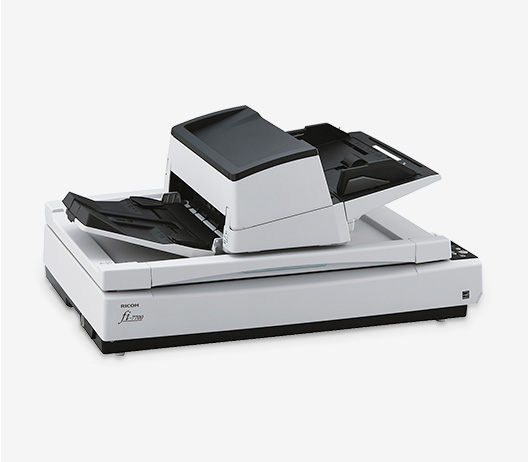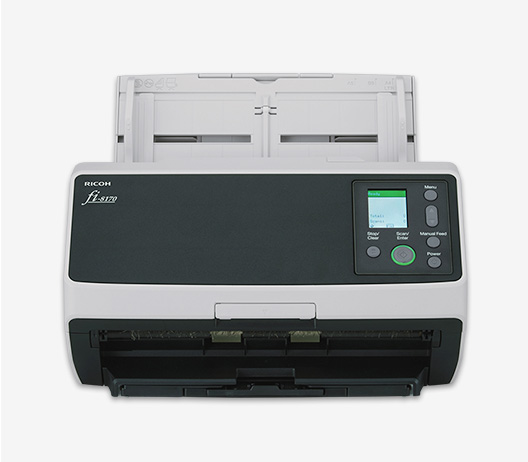
Swedish Medical Center
Within many healthcare systems, the large number of patients, clinics and hospital locations frequently mean that staff is constantly doubling efforts to process and share critical documents that affect the care of patients. Digitizing these health records is often the answer.
Since 1910, Swedish Medical Center has been a hallmark for excellence in healthcare. With over 70 clinics and four hospital locations, Swedish is the largest, most comprehensive, nonprofit healthcare provider in the Greater Seattle area. Swedish is not just about facilities, research, and new techniques, it’s about people coming together to provide the most compassionate care possible. From nurses and physicians to social workers and dietitians, the dedicated team at Swedish Medical Center is defining, on a personal level, what excellence really means. In fact, in an independent research study conducted by the National Research Corp., Swedish has consistently been named the area’s best hospital.
As with many busy hospitals, though, administrators were limited to the use of unreliable fax and copying devices that required them to turn their backs on patients while copying and faxing insurance cards and sensitive health records. They were continually dealing with paper jams and error messages when they could have been assisting with patient care and customer service.
Upon the opening of Swedish/Issaquah, a brand new medical clinic offering 24/7 emergency services and comprehensive specialty care, Swedish Medical Center embarked on a fresh and innovative journey that changed the way they managed workflow. Swedish was in search of a more efficient system for managing the flow of their documents to boost productivity within their hospitals and clinics. Given that the quality of patient care is often linked with operational efficiency and staff workflow, Swedish opened their doors to the idea of Electronic Records Management (ERM).
We no longer have to deal with the inefficiency of massive amounts of paper documentation, Now when a patient comes in, we just capture the documents, verify the quality of the scanned images, and upload them directly into the patient’s EMR—making them secure and instantly available throughout the system, freeing up more time for face-to-face interaction and care. It’s a really huge win for customer service, staff time, and— of course—paper reduction.

Swedish Medical Center’s advantage as a multi-specialty healthcare provider made them unique within the industry because they were able to expose patients to diverse care by coordinating efforts across multiple offices, practices, and hospitals. However, communicating between the various locations proved to be a burden when it came to records efficiency. Patient information that was archived in different departments was difficult to access and distribute.
Swedish’s first objective was to employ an enterprise level Electronic Medical Record (EMR) system which would require a reliable, cost-effective, and intuitive document imaging device that would replace the copy and fax machines in the office and move these stored records into a central repository for quick and easy access.
Due to the shapes, sizes and textures of documents that needed to be copied, faxed, and stored - such as insurance cards, 8 1⁄2 x 11 papers, etc. - Swedish required a robust scanner that encompassed an impressive set of abilities, including double-sided scanning, the capacity to scan a variety of documents simultaneously in black & white and color, and unprecedented speed.
Also, the information on each document was critical to patient care. The images on each scan needed to be as clear as possible. With the accumulation of dirt, lint, gum, paper, and other debris on insurance cards, it was necessary to utilize a machine that was capable of cleaning the image to reach the best quality and capture minute details.
Dependability was another key factor in the selection process. For over a year, Swedish had been using an fi Series document scanner at the Issaquah site without any service calls. Considering that criteria, Swedish employed the use of an fi Series workgroup scanner, which had capabilities that surpassed scanning devices from other considered manufacturers. Not only was the fi Series scanner equipped to perform all of the necessary functions that Swedish required to capture their documents, but it was extremely easy to use and deploy, had zero service issues, and its physical real estate was no more than a small footprint, freeing up space in each office location.
“We knew we had to start with the root of the problem, in order to design a seamless user interface that would have the smallest impact on our users, while providing the best results,” said Cathy Johnson, who implemented the imaging system at Swedish Medical Center. “The foundation of patient care begins with the administrative staff. If they’re not supplied with the proper tools to do their jobs quickly and effectively, the entire office is affected - doctors can’t do their jobs without consent forms or HIPAA records, lab technicians can’t file their test results. In making sure that our team has the highest quality tools to communicate their health records management needs, our patients receive the best care possible.”
ImageSource, a provider of Enterprise Content Management solutions, provided Swedish with expert counsel on maximizing their utilization of Kofax, an image enhancement software, packaged with the fi Series document scanners that gave Swedish staff the option of scanning directly to PDF, file, print or batch, and integrate with the Epic Systems ERM. Furthermore, the initial utilization of the fi Series scanners at Swedish/Issaquah clinic proved so successful that the scanning devices were implemented in all Swedish Medical Center locations.
Since the deployment of the first fi Series scanner, Swedish Medical Center implemented over 240 fi Series document scanners into their various locations and digitized over four million pages of documentation, eliminating the need for photocopying and faxing. In addition, Swedish’s transition to the full EMR system, where it hosted all of its mission-critical information, equipped staff within the various clinics with the resources to decrease the time it took to manage and retrieve health records and claims. This increased workflow, patient uptime, safety, and satisfaction.
With the EMR system in place, the health records and insurance and billing claims were digitized and ready for instant retrieval within the various facilities, not easily misplaced or destroyed. Moreover, personnel spent less time searching for paper charts and gained the ability to access medical records from several locations. Swedish Medical Center also freed up time to channel efforts into creating a greener workplace - they transitioned their clinics and hospitals to an environment with entirely paperless patient charts.
“We no longer have to deal with the inefficiency of massive amounts of paper documentation,” said Johnson. “Now when a patient comes in, we just capture the documents, verify the quality of the scanned images, and upload them directly into the patient’s EMR—making them secure and instantly available throughout the system, freeing up more time for face-to-face interaction and care. It’s a really huge win for customer service, staff time, and— of course—paper reduction.”


